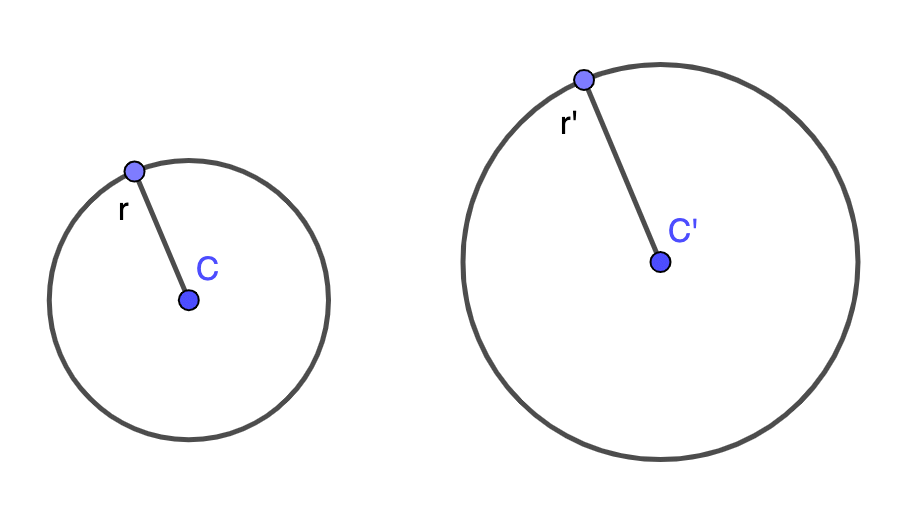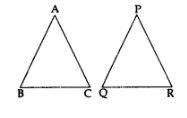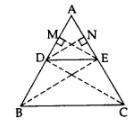Triangles Class 10 Notes Maths Chapter 6
| Table of contents |

|
| Similar Figures |

|
| Similar Polygons |

|
| Thales Theorem or Basic Proportionality Theory |

|
| Criterion for Similarity of Triangles |

|
Similar Figures
- Two figures having the same shape but not necessary the same size are called similar figures.
- All congruent figures are similar but all similar figures are not congruent.
For Example:
(i) Any two line segments are similar since length are proportional
(ii) Any two circles are similar since radii are proportional

(iii) Any two squares are similar since corresponding angles are equal and lengths are proportional.
Note: Similar figures are congruent if there is one to one correspondence between the figures.
Similar Polygons
Two polygons are said to be similar to each other, if:
- Their corresponding angles are equal, and
- The lengths of their corresponding sides are proportional
For Example:
From above we deduce:
Any two triangles are similar, if their
(i) Corresponding angles are equal
- ∠A = ∠P
- ∠B = ∠Q
- ∠C = ∠R
(ii) Corresponding sides are proportional
Thales Theorem or Basic Proportionality Theory
Theorem: If a line is drawn parallel to one side of a triangle to intersect the other two sides in distinct points, the other two sides are divided in the same ratio.
Proof of Thales Theorem
Given: In ∆ABC, DE || BC.
To prove: AD/DB = AE/EC
Const.: Draw EM ⊥ AD and DN ⊥ AE. Join B to E and C to D.
Proof: In ∆ADE and ∆BDE,
 ……..(i) [Area of ∆ = 1/2 x base x corresponding altitude]
……..(i) [Area of ∆ = 1/2 x base x corresponding altitude]
In ∆ADE and ∆CDE,

∵ DE || BC …[Given ]
∴ ar(∆BDE) = ar(∆CDE) …[∵ As on the same base and between the same parallel sides are equal in area]
From (i), (ii) and (iii),
Criterion for Similarity of Triangles
Two triangles are similar if either of the following three criterion’s are satisfied:

- AAA similarity Criterion: If two triangles are equiangular, then they are similar.
- Corollary (AA similarity): If two angles of one triangle are respectively equal to two angles of another triangle, then the two triangles are similar.
- SSS Similarity Criterion: If the corresponding sides of two triangles are proportional, then they are similar.
- SAS Similarity Criterion: If in two triangles, one pair of corresponding sides are proportional and the included angles are equal, then the two triangles are similar.
Results in Similar Triangles based on Similarity Criterion:
- Ratio of corresponding sides = Ratio of corresponding perimeters
- Ratio of corresponding sides = Ratio of corresponding medians
- Ratio of corresponding sides = Ratio of corresponding altitudes
- Ratio of corresponding sides = Ratio of corresponding angle bisector segments
|
127 videos|584 docs|79 tests
|
FAQs on Triangles Class 10 Notes Maths Chapter 6
| 1. What are similar figures and how can we identify them? |  |
| 2. What defines similar polygons and how do we determine if two polygons are similar? |  |
| 3. What is Thales' Theorem and how does it relate to similar triangles? |  |
| 4. What is the criterion for the similarity of triangles? |  |
| 5. How can we apply the Basic Proportionality Theorem in real-life situations? |  |
















